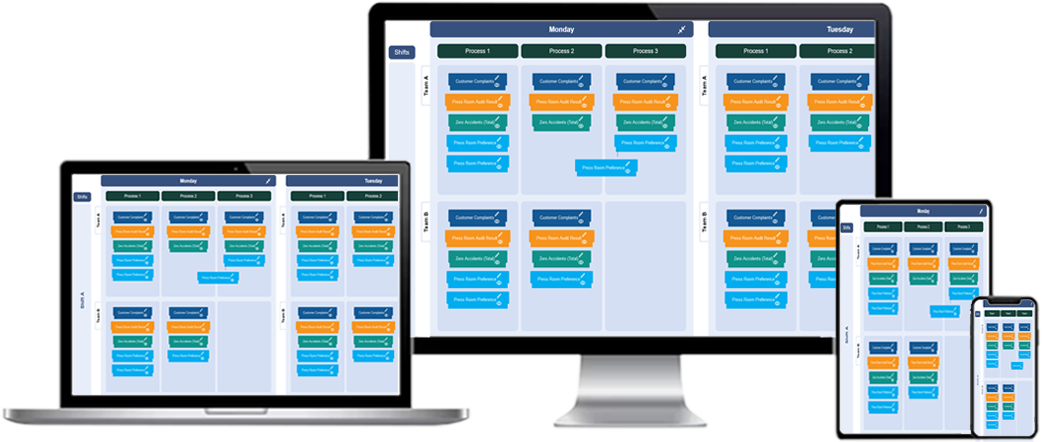TCard software is an advanced digital solution designed to enhance task tracking, workflow management, and team collaboration. Unlike traditional physical TCard boards, digital versions provide real-time updates, automation, and integration capabilities, making them ideal for industries such as manufacturing, logistics, and service management.

1. Understanding TCard Software
TCard software replicates the traditional TCard board system digitally, offering a structured way to organize and monitor tasks. Each TCard represents a specific task, process, or event, and these cards move through various workflow stages, providing a visual representation of progress.
2. Key Features of TCard Software
- Customizable Boards: Create boards tailored to specific workflow requirements.
- Task Assignment: Assign tasks to individuals or teams with deadlines and priority levels.
- Drag-and-Drop Functionality: Move tasks across different workflow stages effortlessly.
- Real-Time Updates: Ensure instant task tracking and collaboration.
- Color-Coding and Categorization: Differentiate tasks based on urgency, department, or type.
- Automated Notifications: Receive alerts for task deadlines, status changes, or important updates.
- Data Analytics and Reporting: Generate reports to analyze performance and identify inefficiencies.
- Integration with Other Systems: Connect with ERP, MES, and project management tools for a seamless workflow.
3. How to Set Up TCard Software
Step 1: Define Your Workflow
Before setting up the software, outline your workflow process. Determine key stages such as "Pending," "In Progress," "Completed," or custom phases based on your business needs.
Step 2: Create a TCard Board
Set up a new board within the software, defining the columns representing different workflow stages. Customize the layout to reflect operational requirements.
Step 3: Add and Configure TCards
Create TCards for each task or process. Include essential details such as:
- Task description
- Assigned team member
- Due date
- Priority level
- Additional notes or attachments
Step 4: Assign Tasks and Track Progress
Allocate TCards to relevant team members and track their progress. Drag cards across different stages to reflect updates in real-time.
Step 5: Monitor and Optimize Workflow
Utilize built-in analytics to assess task completion rates, identify bottlenecks, and implement improvements to enhance efficiency.
4. Benefits of Using TCard Software
- Improved Task Visibility: Gain a clear overview of task progress and workload distribution.
- Enhanced Collaboration: Enable teams to work together more effectively with shared access and updates.
- Increased Productivity: Reduce manual tracking efforts and streamline task management.
- Automation and Efficiency: Eliminate redundant processes with automated workflows.
- Scalability: Adaptable for small teams or enterprise-level operations.
- Historical Data Tracking: Maintain a detailed record of completed tasks for future reference.
5. Future of TCard Software
As businesses continue adopting digital solutions, TCard software will evolve with AI-driven insights, predictive analytics, and enhanced automation, further optimizing workflow efficiency and task tracking.
By leveraging TCard software, companies can improve task management, reduce delays, and achieve a more structured and efficient operational workflow.
How do you use it for TCard Software?
What is T Card software?
T Card software is a digital tool that allows users to organize, track, and manage tasks using virtual T Cards on an interactive board.
How does T Card software improve task management?
It improves task management by providing a clear visual representation of tasks, making it easy to assign, track, and update work progress.
Can T Card software be customized for different industries?
Yes, T Card software can be tailored to fit different industries by modifying board layouts, labels, and categories.
What are the main features of T Card software?
Main features include task tracking, customizable workflows, real-time updates, reporting tools, and user collaboration.
How do you set up a T Card board in the software?
To set up a T Card board, define workflow stages, create digital T Cards, assign tasks, and update progress as work moves forward.
What types of tasks can be managed with T Card software?
T Card software can manage maintenance schedules, production planning, resource allocation, and team coordination.
How does T Card software help with workflow tracking?
It helps by visually displaying tasks in different workflow stages, making it easy to identify progress and bottlenecks.
Can multiple users collaborate on the same T Card board?
Yes, multiple users can access and update the same T Card board, ensuring smooth teamwork and task coordination.
How do you update tasks in T Card software?
Tasks are updated by moving T Cards to different workflow stages and adding notes or status updates as needed.
What are the benefits of using digital T Cards over physical ones?
Digital T Cards provide real-time updates, remote access, automation features, and improved data tracking compared to physical cards.
How does T Card software support resource planning?
It allows managers to allocate resources efficiently by tracking availability, workload, and task dependencies.
Can T Card software generate reports and analytics?
Yes, T Card software can generate reports that provide insights into task completion rates, productivity, and workflow efficiency.
How do you track task progress using T Card software?
Task progress is tracked by updating card statuses, moving them between workflow stages, and monitoring timelines.
What are the best practices for using T Card software effectively?
Best practices include defining clear workflow stages, updating tasks regularly, and using labels for better organization.
Is T Card software suitable for both small and large teams?
Yes, T Card software is scalable, making it effective for small businesses and large enterprises managing complex workflows.